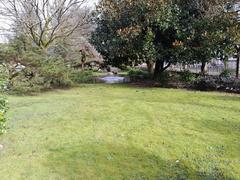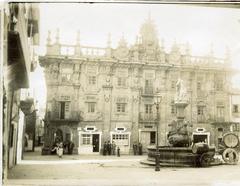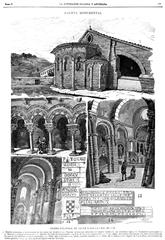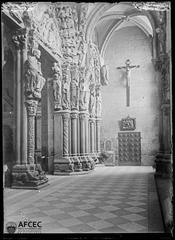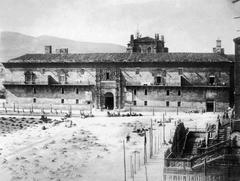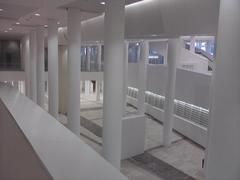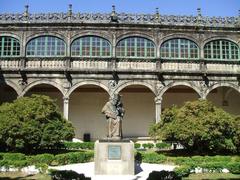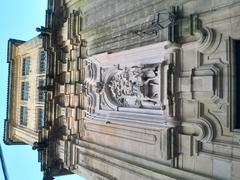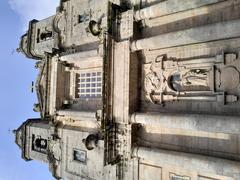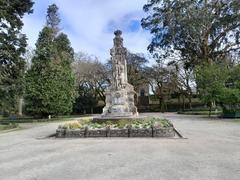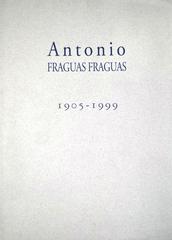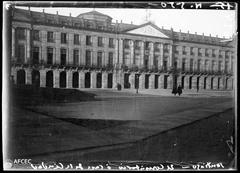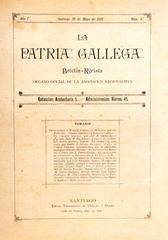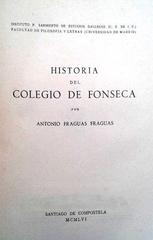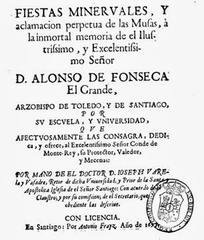Pazo de Fondevila, Santiago de Compostela: Visiting Hours, Tickets, and Complete Guide
Date: 04/07/2025
Introduction
Set in the heart of Santiago de Compostela’s UNESCO-listed old town, the Pazo de Fondevila is a striking emblem of Galicia’s noble heritage and Baroque architectural splendor. This 18th-century “pazo” (manor house) invites visitors to explore the social, political, and artistic legacy that defines the city. Whether you are an architecture lover, history enthusiast, or a traveler seeking to discover Santiago de Compostela’s historical sites, understanding the Pazo de Fondevila’s significance will greatly enhance your experience in this renowned pilgrimage city (Secret Attractions; Turismo de Galicia).
Historical and Architectural Overview
Origins and Evolution
The Pazo de Fondevila’s origins date back to the mid-18th century, with records suggesting construction around 1760, likely under the direction of architect Clemente Fernández Sarela. Built in the “barroco de placas” style—a regional Galician Baroque—the manor features robust granite masonry, symmetrical facades, and an ornate family coat of arms. These elements not only signify the status of its original owners but also showcase the craftsmanship and material harmony characteristic of Galician architecture (Artehistoria; CVC Cervantes).
Over time, the pazo underwent modifications, including wrought-iron balconies and landscaped gardens, reflecting the evolution of aristocratic tastes. Its preservation offers a distinctive window into the architectural and social history of Santiago’s elite.
Social Role and Lineage
Throughout its history, the Pazo de Fondevila served as a residence for various noble families, most notably the Fondevila family, whose coat of arms still adorns the building. It functioned as a center for agricultural administration, social gatherings, and cultural events, mirroring the broader role of pazos in Galician society. The building’s archives document the transitions of ownership and provide a glimpse into the shifting fortunes of the Galician aristocracy, especially during periods of social and political change (El Correo Gallego).
Urban Context
Located on Rua das Casas Reais, the pazo occupies a strategic position along a street historically frequented by pilgrims entering Santiago de Compostela. Its proximity to the Cathedral of Santiago and other monumental buildings enhances its prominence within the urban landscape (Paxinas Galegas).
Visiting the Pazo de Fondevila: Practical Information
Visiting Hours & Admission
Current Status:
As of the latest information, the Pazo de Fondevila is not regularly open for interior tours. Visitors are encouraged to admire its impressive exterior and architectural details as part of a walking tour of Santiago’s historic center.
- Exterior Viewing: Accessible year-round
- Interior Access: Not currently available to the general public
- Admission: Free for exterior viewing; no ticket required
Accessibility
The area surrounding the Pazo de Fondevila is pedestrian-friendly and suitable for visitors with limited mobility, though some cobblestone streets may present challenges. The building’s interior accessibility is not applicable at this time, as it is not open for public visits (Minube).
Guided Tours
While the interior remains closed, several local tour operators include the Pazo de Fondevila as a highlight on guided walking tours of the old town, providing historical context and architectural insights.
How to Get There
- Address: Casas Reais 14, Santiago de Compostela, Spain
- On Foot: 5-minute walk from the Cathedral of Santiago de Compostela
- By Public Transport: Main bus and train stations are within a 15–20 minute walk or a short taxi ride
Nearby Attractions
- Cathedral of Santiago de Compostela: The city’s iconic pilgrimage destination
- Pazo de Fonseca: Historic university building
- Museum of the Galician People
- Alameda Park: Urban green space with panoramic views
Cultural Significance and Conservation
The Pazo de Fondevila is an integral part of Santiago de Compostela’s UNESCO World Heritage-listed historic center. Its enduring presence on Rua das Casas Reais—alongside other grand residences—serves as a testament to the city’s aristocratic past and the social structures that shaped its development (Wikipedia). Conservation efforts ensure that the building’s façade and heraldic details continue to enrich the city’s architectural tapestry, even as debates about its future use persist (Adventure Backpack).
Frequently Asked Questions (FAQ)
Q: Can I tour the interior of the Pazo de Fondevila?
A: The building is currently not open for interior visits. Visitors are welcome to view and photograph the exterior.
Q: Are there guided tours that include the Pazo?
A: Yes, many walking tours of the old town include the Pazo de Fondevila as a point of interest.
Q: Is there an entrance fee?
A: No, there is no fee to view the exterior.
Q: How accessible is the area for visitors with disabilities?
A: The surrounding old town is mostly pedestrian-friendly. Contact local tourism offices for detailed accessibility guidance.
Travel Tips & Recommendations
- Photographers: The pazo’s corner façade and heraldic crest are best photographed in the morning or late afternoon light.
- Accessibility: Bring appropriate footwear for cobblestone streets; wheelchair users may want to plan routes in advance.
- Combine Your Visit: Pair a walk to the Pazo de Fondevila with stops at the Cathedral, Alameda Park, and local cafés.
Conclusion & Next Steps
The Pazo de Fondevila remains a key piece of Santiago de Compostela’s historical and cultural fabric. While interior visits are not currently possible, its exterior offers a valuable glimpse into Galicia’s aristocratic tradition and Baroque artistry. Include the pazo in your self-guided or organized tour to deepen your appreciation for the city’s layered history.
For updates on potential future openings, events, or changes to visitor information, consult official tourism resources or the Turismo de Galicia website. Enhance your experience by downloading the Audiala app for self-guided audio tours and the latest travel news. Follow us on social media to stay informed about upcoming cultural events and new visitor opportunities.
References
- Secret Attractions
- Turismo de Galicia
- El Correo Gallego
- Minube
- The Crazy Tourist
- Paxinas Galegas
- Artehistoria
- CVC Cervantes
- Wikipedia
- Adventure Backpack
- Spain.info: Santiago de Compostela
- UNWTO Accessibility Resources
- A Ticket to Take Off: Visit Santiago de Compostela
